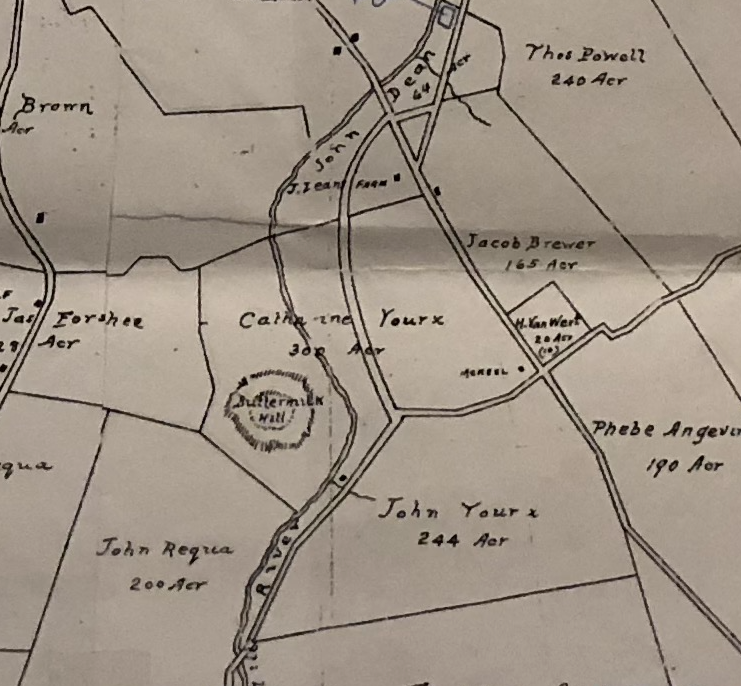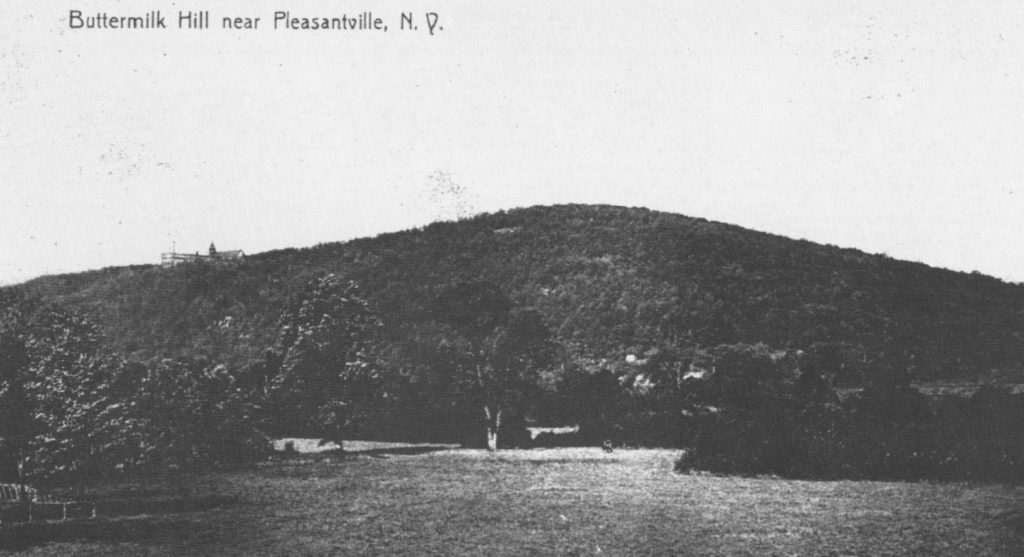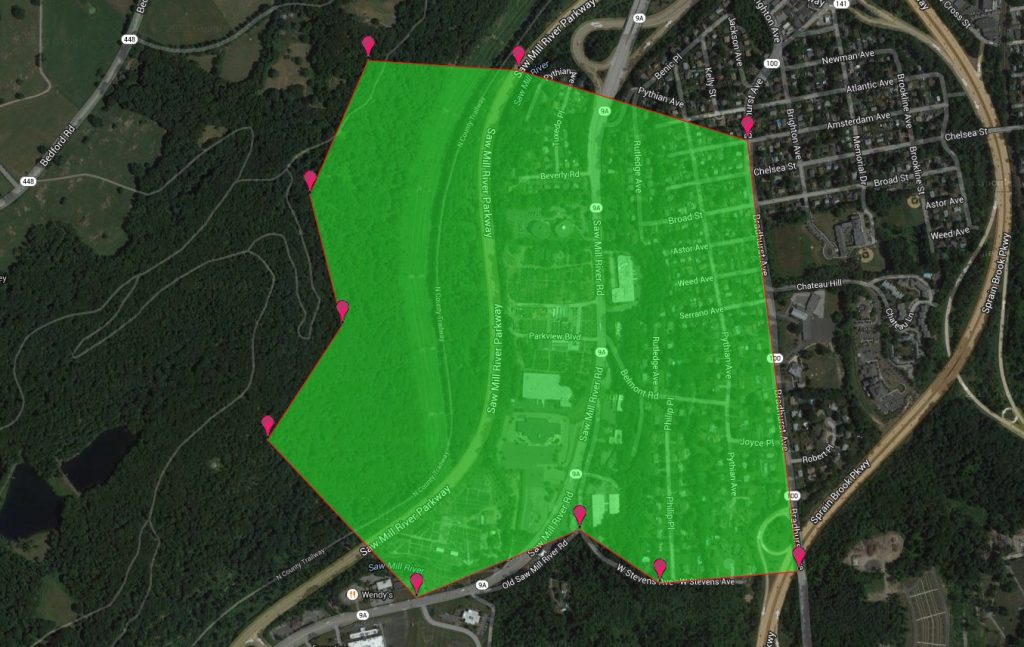‘Attention All Persons living in the Green Zone below. You are nearby ordered to vacate your homes immediately. Colleen Hayes (nee Yerks) intends to re-claim her great x6 grandmother Catherine Yerks 300 acre farm in Unionville (now Hawthorne). We will give you until tomorrow at sunset to get off our land. This includes you JD Rockefeller and your snazzy Pocantico Hills Estate.’
Back in 2013, I made some social media posts joking about reclaiming land once owned by my wife’s ancestors. Here is the story behind it.
The Yerks name has many variations, making researching the family incredibly challenging. Here are some of the many variations one will encounter when researching the family. You will see some of these in this post. Jurckse, Yerex, Yerk, Yerkes, Yerkas, Yerks, Yerx, Yerxa, Yourex, Yourx, Yurex.
Just understand, no matter which one of these surnames you see attached to a person in this post, we are talking about what today we call a “Yerks”.
William Jurckse was born circa 1725 in Philipsburg Manor, probably somewhere in an area encompassing today’s villages of Pocantico Hills, Tarrytown, North Tarrytown, Pleasantville, Thornwood and Hawthorne. William’s second wife was Catrina (Catherine) Sie. Catherine was born 30 August 1735 in the area of today’s Mount Pleasant. Together they had at least nine children.
William was one of many “tenant farmer” of Philipsburg Manor”. Philipsburg Manor was an English manor located north of New York City in the Province of New York. It lasted from 1693 until 1779. The land was part of a Dutch patroonship owned by Adriaen van der Donck but was later purchased by Frederick Philipse I. By 1750, the tenant population on the manor numbered about 800 people living on about 150 leaseholds.
The manor’s property was eventually sold at auction after Loyalist Frederick Philipse III was found guilty of treason by New York’s revolutionary government and his land was confiscated. Some of the original structures still stand, including the Philipsburg Manor House in Sleepy Hollow and the Old Dutch Church of Sleepy Hollow, both of which are National Historic Landmarks.
When the revolution broke out, William had some important decisions to make. You see, this area of Philipsburgh Manor was in the center of what was known as the “Neutral Zone”, with American forces to the North and British forces to the South in New York City. What would he do if called upon to take sides? Well, the details of his decision, make for an interesting separate post. But for the purposes of this post, I can tell you that he chose to be a Patriot.
William died sometime during the revolutionary war or just after the war. The exact date is not known, but in 1785, the Commissioners of Forfeiture for the State of New York awarded his wife, Catherine
William died sometime during the revolutionary war or just after the war. The exact date is not known, but in 1785, the Commissioners of Forfeiture for the State of New York awarded his wife, Catherine

The map below is a clipping from a much larger map showing the properties divided up for distribution by the Commissioners of Forfeiture. Right through the middle of the property, you can see what is known as the Saw Mill River. For those of you who know the area, you know that the Saw Mill Parkway pretty much follows the river in that area. So as you drive south along the Saw Mill River Parkway, south of what was the Hawthorne Circle, you are driving on what was once the farm of William and Catherine Yerks and their ancestors. Today, you would say this 300-acre farm can be found in Hawthorne (formally Unionville), New York.

You will also see a hill marked as Buttermilk Hill. Buttermilk Hill is a high rocky ridge at the northeastern section of the Rockefeller State Park Preserve and is said to get its name from the turbulent period of the American Revolutionary

The map below roughly depicts the 300-acre property lines of what was Catherine Yerks Farm as outlined in



